Rwanda is a tourism hot spot, driven primarily by the country’s Volcanoes National Park. The large park, part of the Virunga Mountain Chain, protects more than 20 families of highly endangered mountain gorillas. And given that only 100 people per day are allowed to trek into the park to look for gorillas, the park and its animals are very healthy.


$35 Safaris, $190 Lux Glamping: a Budget African Safari in Rwanda
That draws thousands of visitors per year who gladly fork over $1,500 per day (per person!) to see the intelligent, wild primates. Gorilla trekking is also available in Uganda, and costs about half the price — but only Rwanda guarantees you’ll see the gorillas, thanks to dedicated teams of trackers who monitor the families’ health and behavior, and stay in contact with the guides to help them find their location each day.
But what visitors probably don’t know is that Rwanda doesn’t need to be just a three-day stop over on a safari trip to Kenya or South Africa. Rwanda has its own national park — Akagera National Park — and it’s absolutely thriving. Not only is it home to Africa’s big five, which includes elephants, lions, leopards, rhinos (white and black), and buffalos, but it’s also home to crocodiles, hippos, nine species of antelope, zebras, giraffes, baboons, civets, and many more.
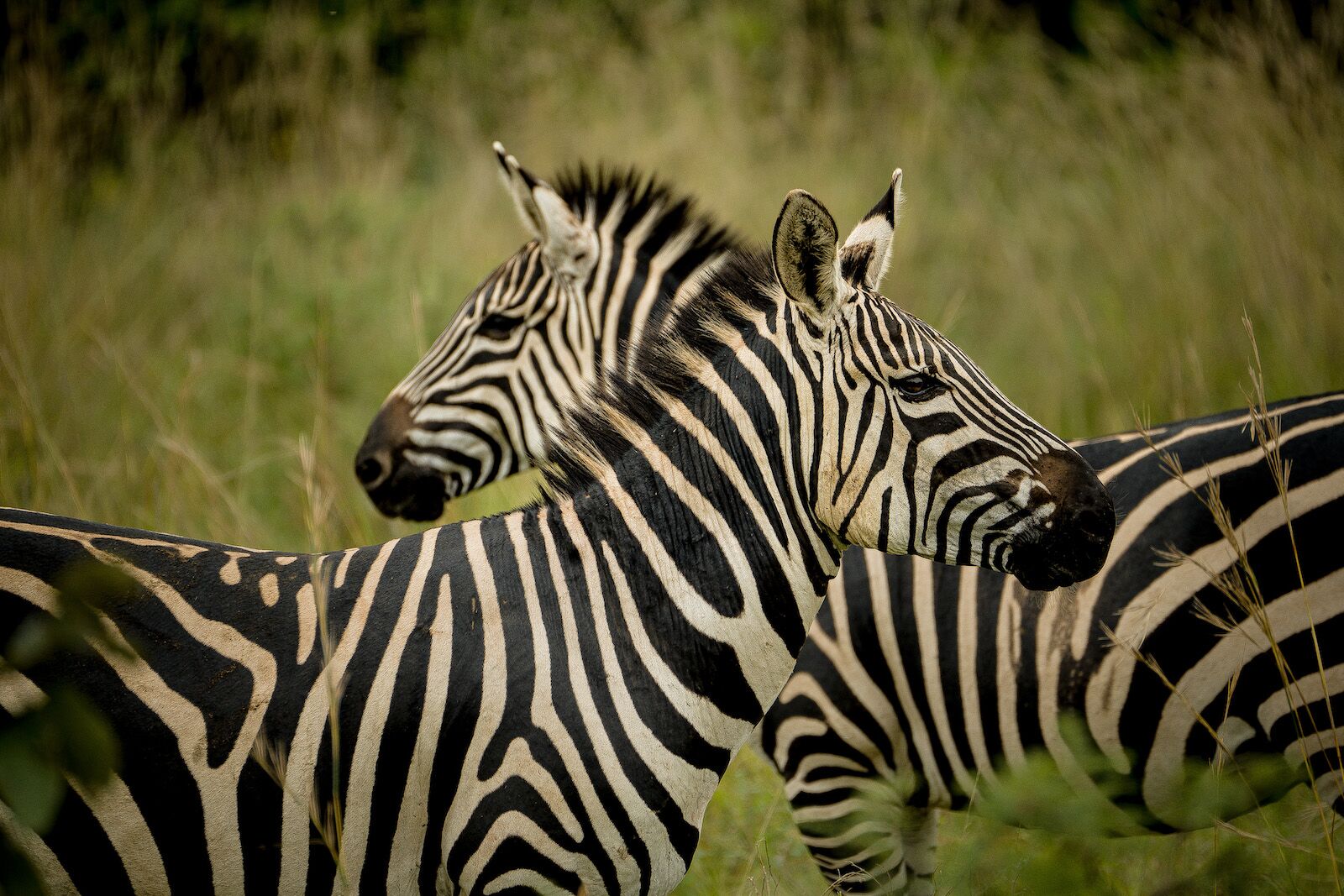
Photo: Suzie Dundas
One of the best things about Akagera is how few people visit. It sees about 45,000 visitors per year, and only 45 cars are allowed to drive through the park per day. So you’re unlikely to see too many other visitors during your trip — unlike at busier national parks, where you’ll see 20 jeeps in a row stuck in traffic jams. That also makes it much easier to spot animals, since there’s less vehicle noise to disturb them.
Here’s what to know to plan a trip to Akagera National Park that won’t break the bank, so you can afford to spring for a gorilla trek. That means you can see some of the rarest species in all of Africa without ever leaving Rwanda (which saves on flight and travel costs, too).
About Akagera National Park
Occupying much of the eastern part of Rwanda (on the border with Tanzania), Akagera National Park is 433 square miles. That’s bigger than New York City. It was established in 1934, though it suffered from extensive poaching and violence during the Rwandan Genocide in the early 1990s. But now, the park is a true success story, and the Rwandan government and African Parks have made it into a fantastic example of how environmental protection benefits the economy and peoples’ livelihoods.
The park is fully protected, and the government offers locals who used to make their livings from poaching jobs in beekeeping, being naturalists in the park, or becoming park rangers or park security officials. Poaching is a near non-issue in the park, and they’ve even managed to reintroduce rare species into the park, including both white and black rhinos.
How to get there
To get to Akagera National Park, you’l need to fly into Kigali, the country’s capital and home of the international airport. From there, it’s about a two-to-three hour drive to reach the south gate of Akagera National Park. Hiring drivers for trips is very common, or you can arrange a taxi, which will probably cost you about $100 each way. If you’re staying in the park, you can probably have your hotel arrange your transportation.
You can also rent a car in Kigali and drive yourself. This is one of the rare national parks in Africa where you can drive your own vehicle on safari. It’s a really fun experience, but note that the dirt roads in the park can be rough and pitted (or muddy) during the rainy season. Because of that, you’ll want to hire a naturalist to ride with you. They can both help you spot animals, and advise on which routes in the park to avoid depending on weather. A naturalist for a full day costs $40, and can be arranged either by your hotel, or by calling the park a few days in advance. Sometimes you can also hire a guide the morning of your safari at the visitor center, but it’s not guaranteed.
Wildlife in Akagera National Park
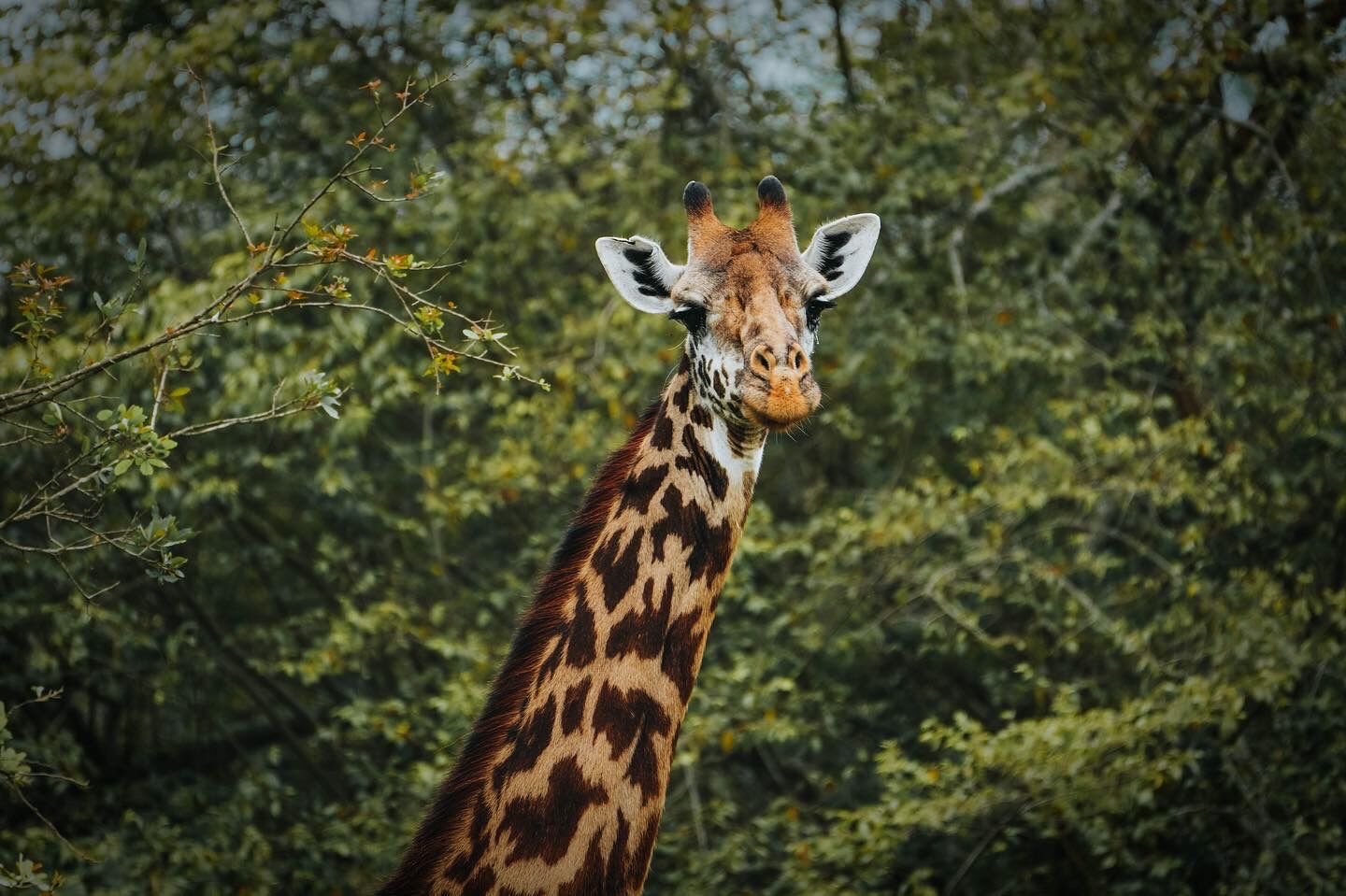
Photo: Suzie Dundas
Akagera National Park has a diverse range of landscapes ranging from hilly areas to woodland habitat to savannah and swampy areas. Many animals, including all five of the Big Five, are indiginous to the park. If you’re lucky, you can spot all the following species in a single day.
Rhinos
Akagera National Park is home to a small but growing population of black rhinos, which were reintroduced in 2017 after a 10-year absence. Rhinos are one of the most endangered species in the world, with only about 5,000 individuals remaining in the wild. In Akagera, you’ll sometimes see rhinos in the park’s savannah grasslands and woodlands, where they feed on a variety of plants. Rhinos are known for their solitary behavior and can be difficult to spot, but hiring a naturalist can help as they know how to spot them. White rhinos are usually spotted in small groups, while black rhinos tend to be solitary (and thus harder to find).
Elephants
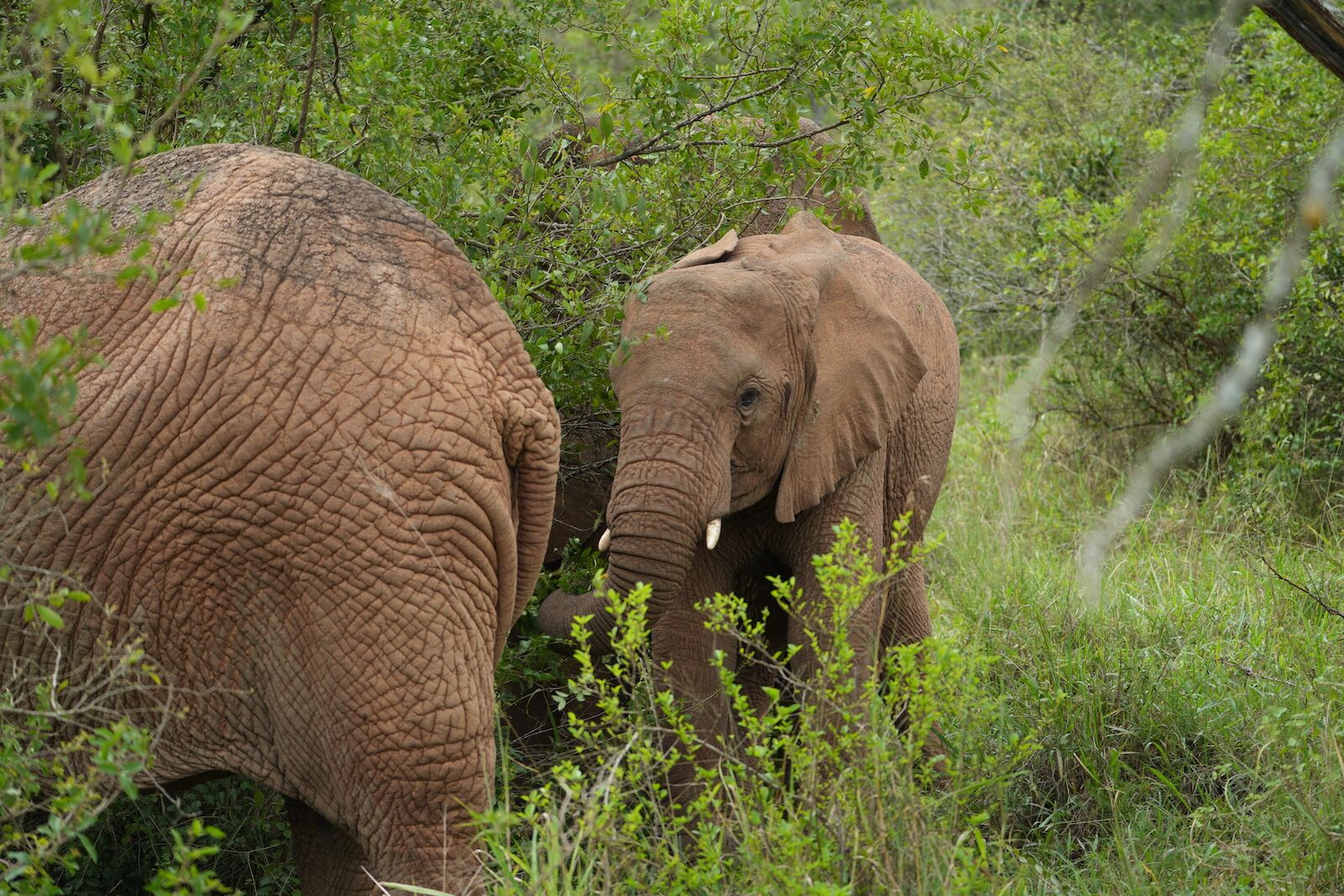
Photo: Suzie Dundas
Elephants are one of the most iconic species in Akagera National Park, with a population of more than 100. They’re usually found in the woodland areas and live in large herds. Though they used to be threatened by poaching, the park’s monitoring and anti-poaching efforts have been very successful, and now the elephants’ numbers are rapidly growing. Visit closer to the rainy season for the best chance of seeing them. They eat many of the park’s lush, green plants, so when those plants are dried up (as they are in the middle of the dry season), the herds tend to gather near lakes, making them harder to spot from the road.
Lions
Lions are the top predator in Akagera National Park, with a population of around 50. They’re usually in rocky areas in the park’s grasslands, where they hunt a variety of prey, including antelopes and zebras. They usually travel in prides and can be hard to spot, especially since they blend in so well with their surroundings.
The park also has about 50 leopards, usually spotted at dusk and dawn. That makes a night game drive ($40 per person) the best way to increase your odds of spotting one, though they’re still hard to find. Look for spotted tails lazily swinging from tree branches.
Hippos
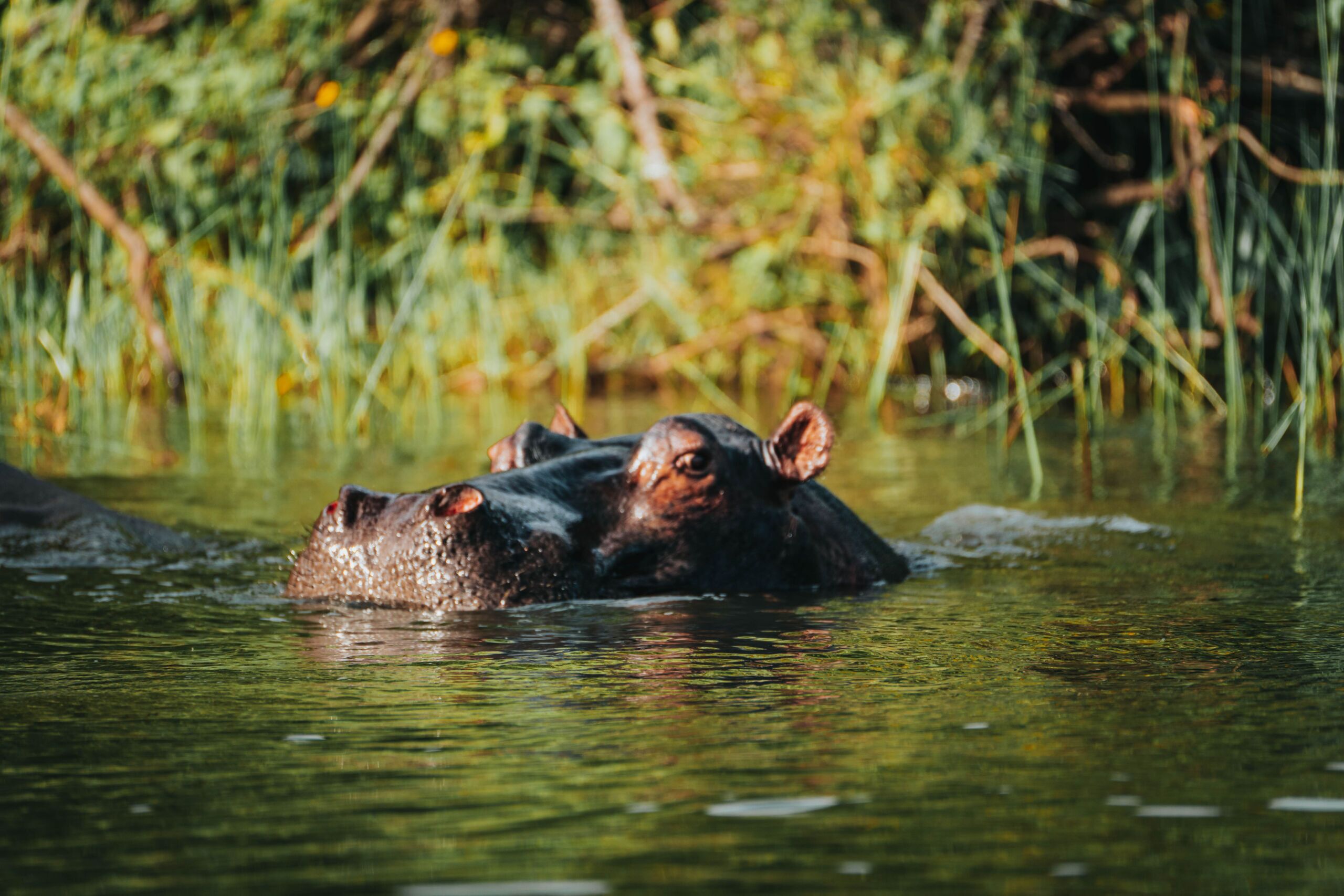
Photo: Suzie Dundas
Hippos are one of the most iconic species in Akagera National Park, with a population of more than 500, mostly around the Lake Ihema area. They’re usually seen in large grounds and best spotted on a boat safari, since they spend much of their time in the water. However, it’s possible to spot them on land around the banks of Lake Ihema and Lake Shakani.
Giraffes
The park is home to many giraffes, which are native to the park and have been there for as long as anyone can remember. They’re fairly easy to spot and can be seen almost anywhere in the park, though some areas with trees they like to munch on are better spots than others. Ask your guide for advice on what roads to take to look for giraffes.
Other major species
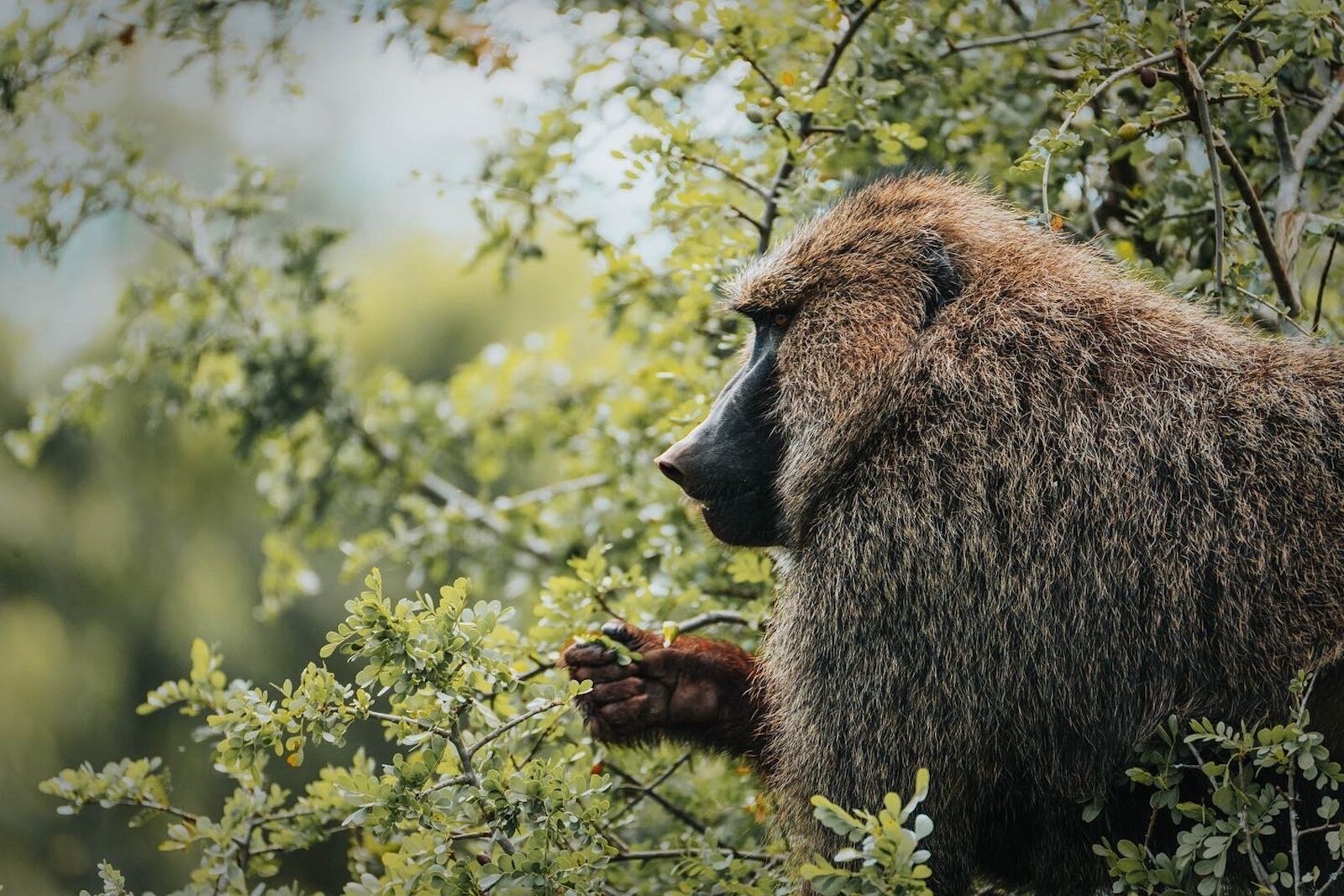
Photo: Suzie Dundas
In addition to the Big Five, Akagera National Park is home to a wide variety of other notable species, including zebras, crocodiles, antelopes, and more. Zebras can be found in the park’s savannah grasslands, usually in the same areas as giraffes — but you’re likely to see several dozen throughout the day if you do a full safari drive. You’ll almost certainly see crocodiles if you go on a boat safari, and animals like baboons, warthogs, and various antelopes are a dime a dozen. Expect to see so many that you stop taking photos of them after a while. Their numbers are really, really healthy.
Activities in Akagera National Park
There are several activities available in Akagera National Park, but of course, safaris are the most popular. They’re also much less expensive than you’d expect. Here’s how to do them.
Boat safari on Lake Ihema
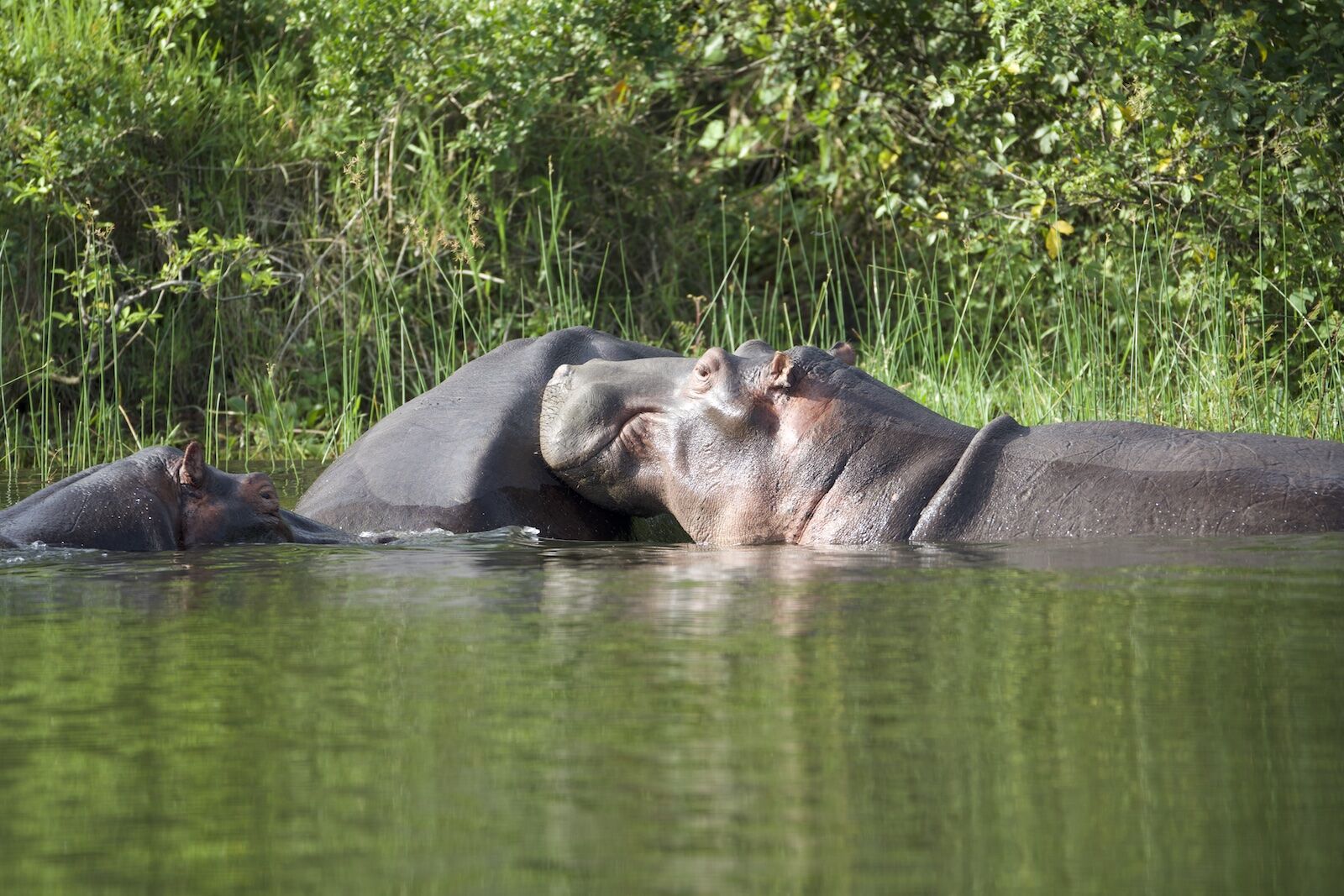
Photo: Suzie Dundas
Boat safaris are offered three or four times a day on the park’s lake. The boats are small and seat about 12 people, and each safari lasts about 70 minutes. You’ll cruise around the park’s largest lake (and the second-largest in Rwanda), looking for species that live near the water. Hippo sightings are practically guaranteed, and you’ll also likely see crocodiles, several bird species, and maybe even elephants, if you’re very lucky. You can ask your hotel to book you on a boat safari, or email the park via the contact form to reserve your spot. The cost is $35 per person.
Driving safaris
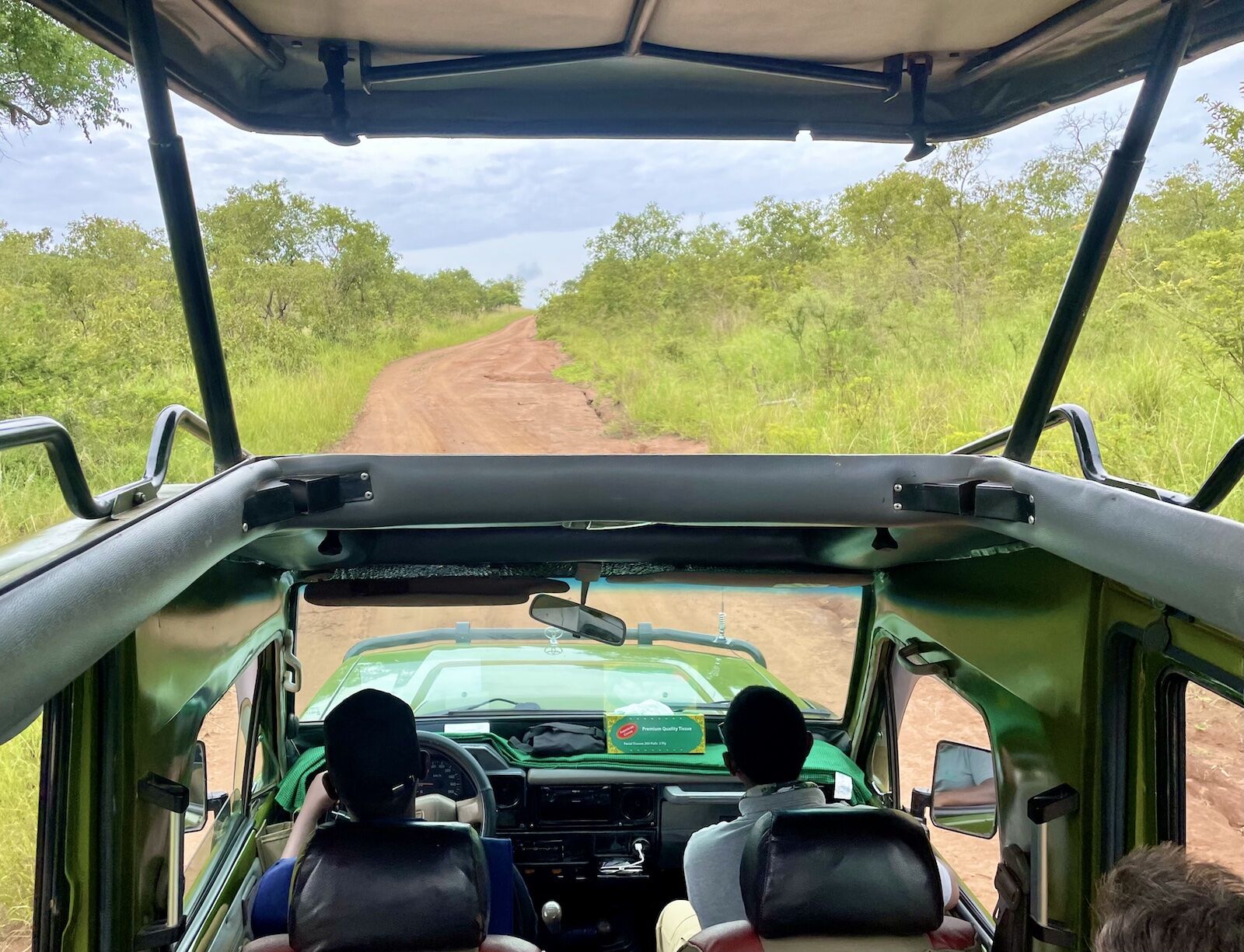
Photo: Suzie Dundas
You can see most of the park in a day, and making a full tour of the park from the south to the north entrance and back again takes about eight hours. You can drive your own vehicle (with a naturalist is a highly recommended), or take a guided safari in a park jeep. The easiest way to arrange a drive or guide is to book it through your hotel — but since the park sees so few visitors a year, you can also just email them to set it up.
Be sure to get a guidebook from the visitor center. It has suggested driving routes, a huge map of the park, a checklist for spotting animals, a birding guide, and useful identification guides to help you identify what you’ve spotted. Game drives cost $280 per vehicle (which fits up to 7 people) for a full day or $180 for a half day if you want to go on a guided one in a park vehicle. Hiring a guide for your own vehicle is $40.
Fence Tours and Behind-the-Scenes tours
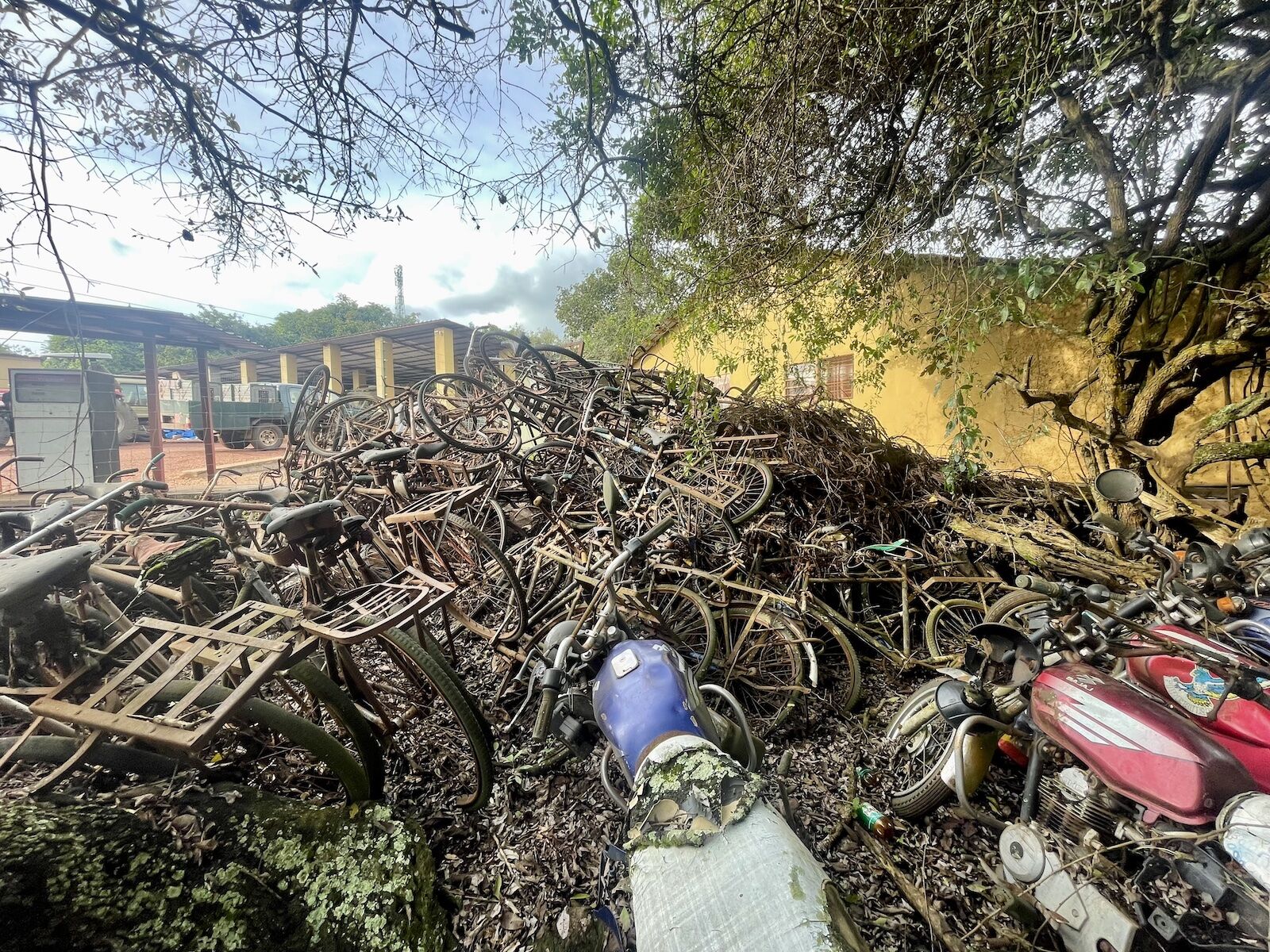
Hundreds of poaching traps collecting by Akagera National Park rangers. On the Behind-the-Scenes tour, visitors can learn how rangers deter poachers and work with communities to offer poaching alternatives. Photo: Suzie Dundas
A fence tour is just what it sounds like: you’ll walk the perimeter of the park with a guide, learning both how they protect the animals within the park, and how they help community members just outside the park benefit from conservation and sustainable farming. You’ll see projects like community beekeeping apiaries, which produce honey residents can sell for much more money than they would have made from illegally fishing or collecting plants within the park.
But what’s really interesting are the behind-the-scenes tours, where you’ll hear about the park’s conservation efforts from a park staffer and get to see the park office and learn how they monitor and track the animals’ health and behavior. You’ll also get to meet the park’s anti-poaching team: a group of trainers and roughly 12 dogs specially bred to track poachers. The dogs are loud barkers, as once they find the poachers, they bark and form a circle around them to trap them in place until the park rangers can come and make an arrest. It’s a fascinating process, and you can tell the rangers are proud of their well-trained canine coworkers.
The Behind-the-Scenes tour is $25 per person, and the guided walk is $30 per person.
The best time to visit Akagera National Park
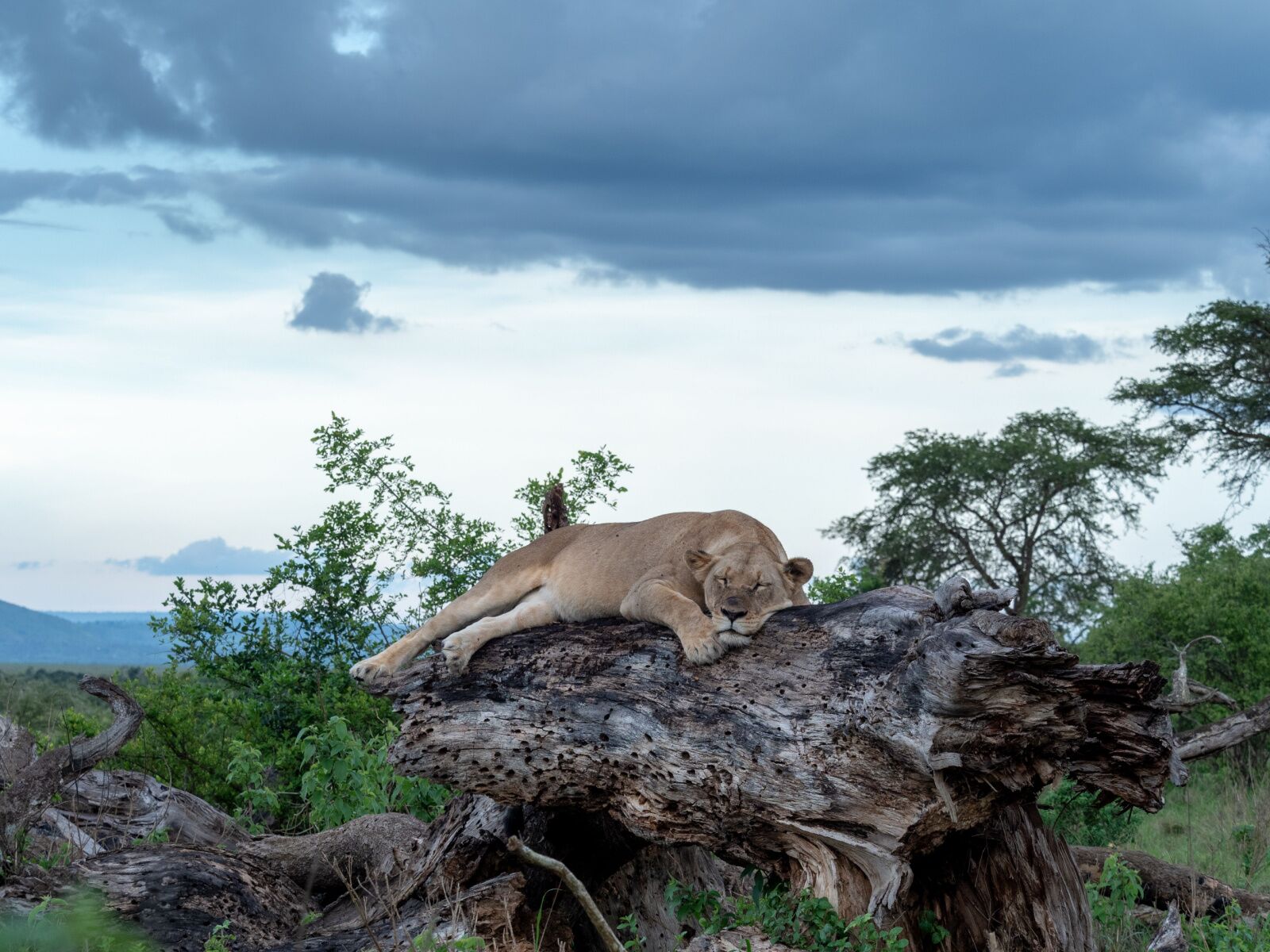
Photo: Hein Myers Photography/Shutterstock
Akagera National Park is open year-round, so no matter when you go to Rwanda, you can visit the park.
Most people will say that the best time to visit the park is in the extended dry season, which is June to September. However, there are some serious downsides to going on safari during that time: much of the plant life in the park is dry and withered, which means animals have to gather closer to lakes and streams — which are harder to see from the road. In the wet season, or just on the edges of it, food sources (i.e. plants) are everywhere, and you’re much more likely to have close encounters with animals on the side of the road or in big fields, instead of hidden away at lakes.
Because of this, the best time to visit just for safari is probably in March, on the edge of the “dry season” within the wet season. There are also fewer people in the park during this season, making it highly likely that you’ll see 10 times as many animals as you do people. Prices for hotels are also slightly lower, too.
Where to stay in Akagera National Park
Just because Akagera doesn’t have a lot of visitors doesn’t mean it lacks for great places to stay.
We hope you love the spaces and stays we recommend! Just so you know, Matador may collect a small commission from the links on this page if you decide to book a stay. Listed prices are accurate as of the time of publication.
Akagera Game Lodge
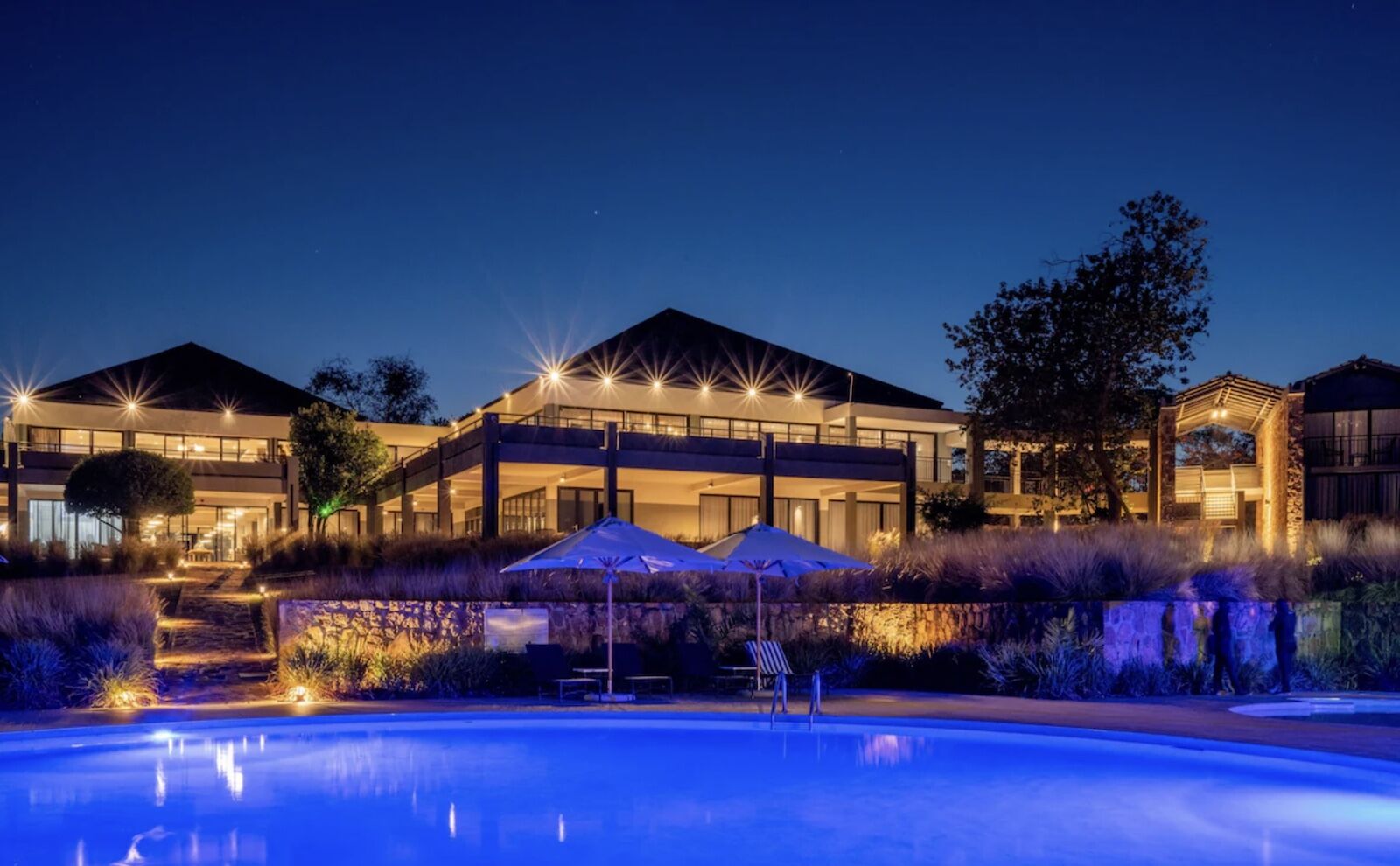
Photo: Expedia
Akagera Game Lodge is a full-service hotel very close to the park’s southern entrance and visitor center. It’s the most similar to a national park hotel in the US, with an outdoor pool and bar, indoor restaurants and lounge, large rooms with wildlife art and decor looking out onto Lake Ihema, and activity booking services. It’s a surprisingly affordable place to stay, too, with rooms starting around $140 per night
Ruzizi Tented Lodge
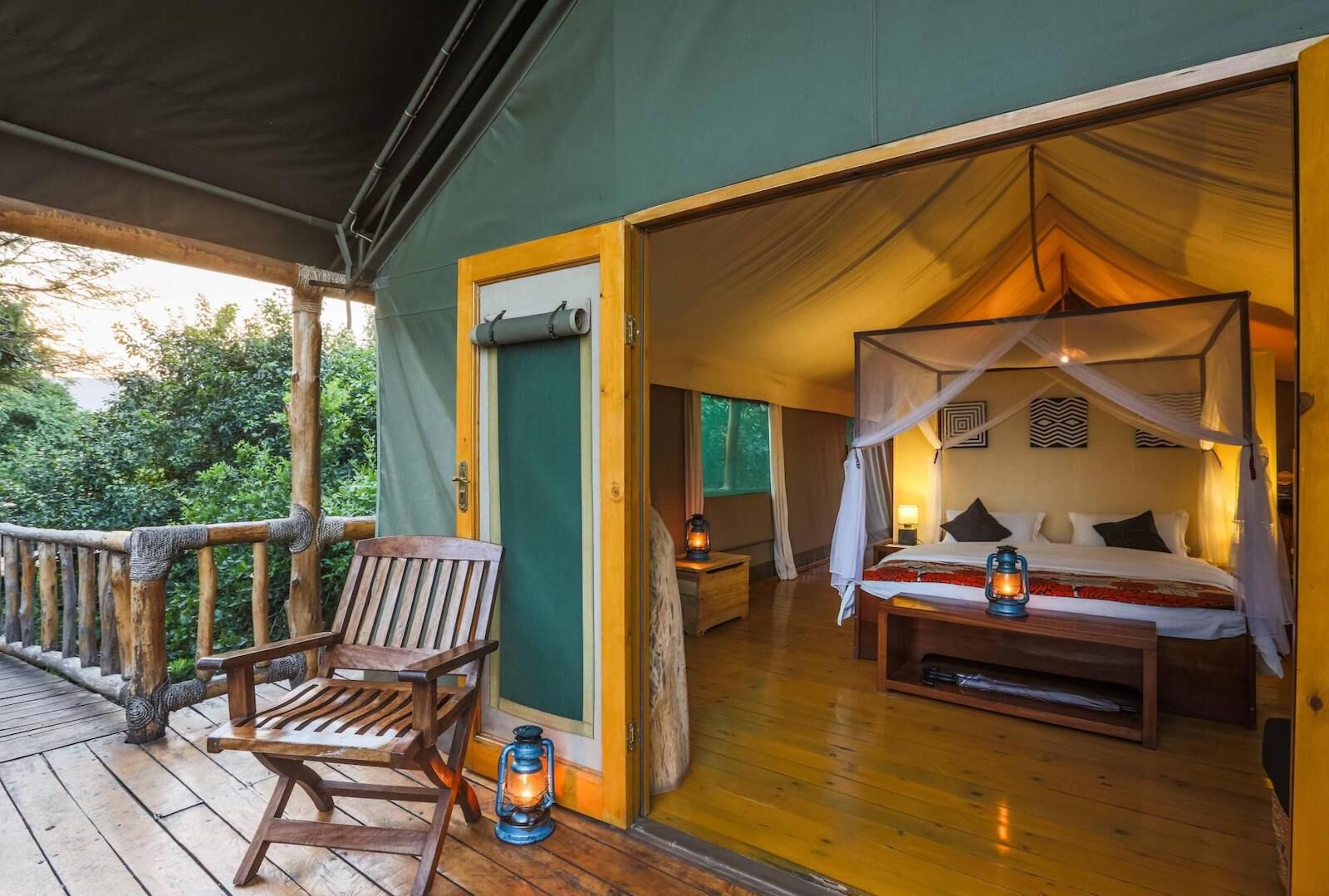
Photo: Ruzizi Game LodgeAfrican Parks/Scott Ramsay
For a super luxurious stay in Akagera, book a room at the Ruzizi Tented Lodge. Rooms are canvas safari tents furnished with four-posted beds, with private bathrooms and big outdoor living spaces. There’s a communal firepit and plenty of outdoor spaces overlooking one of the park’s lakes. Staff can take care of all activity and booking needs, and rooms start at a price point much lower than other luxury safari camps: $195 per person. There’s also a very, very high-end bush camp called “Wilderness Magashi,” but it’s almost exclusively booked by people staying as part of a longer guided trip through the country.
Karenge Bush Camp
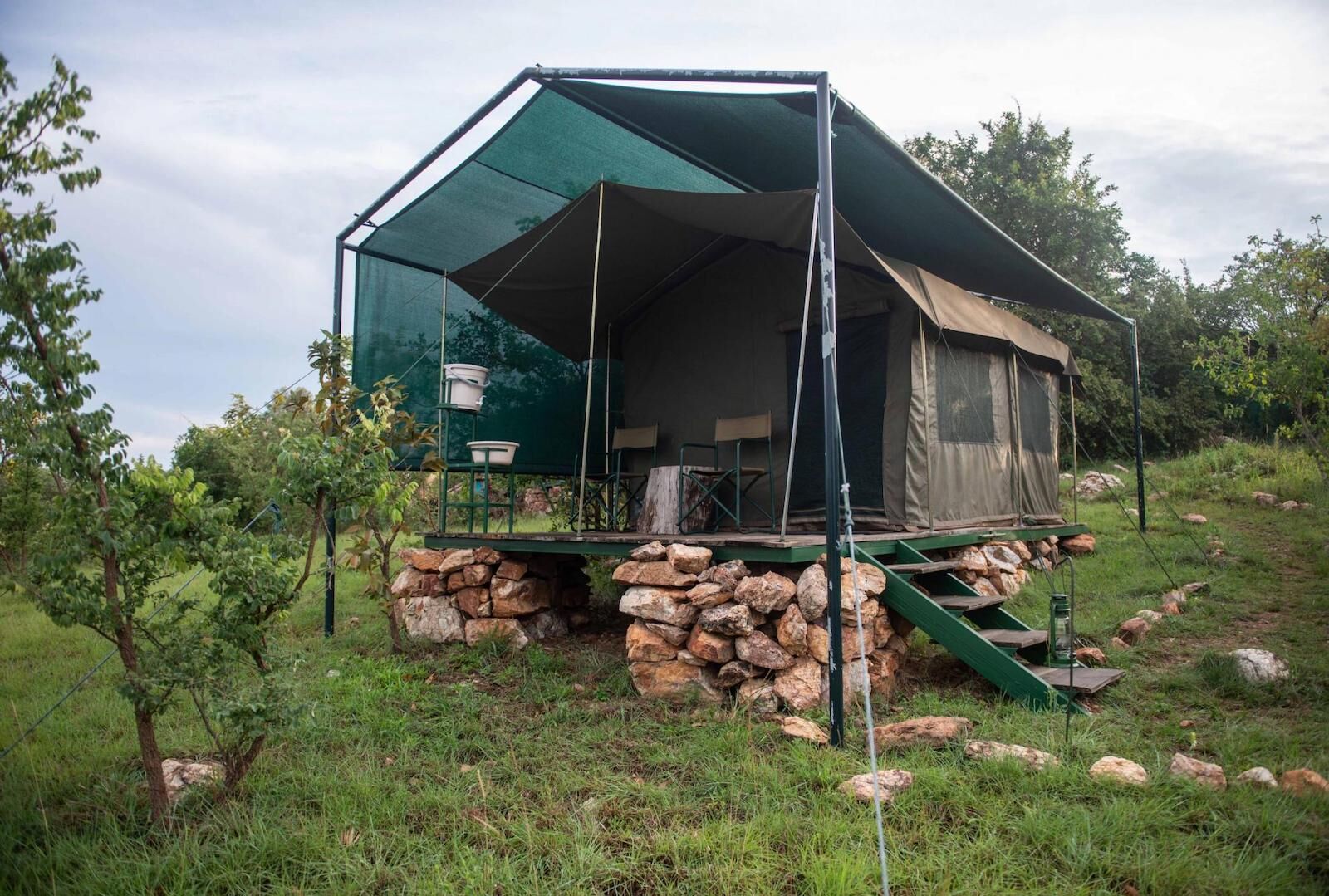
Photo: Karenge Bush Camp/African Parks/Scott Ramsay
If you love the idea of glamping in Rwanda but want to save most of your money for the far more expensive gorilla trek, book a room at Karenge Bush Camp, near the northern entrance. It’s more rustic, with shared bathrooms and solar lanterns for lighting. But it also has a communal fire pit area overlooking a huge field where animals hang out, park-view toilets complete with one open side (so you can spot zebras on the comode), and daily breakfast with coffee on your deck. And prices start closer to $150 per person.